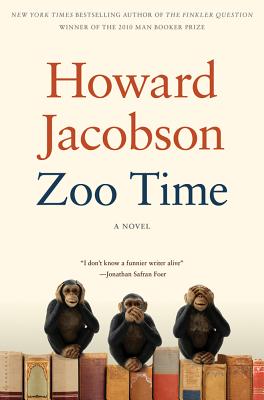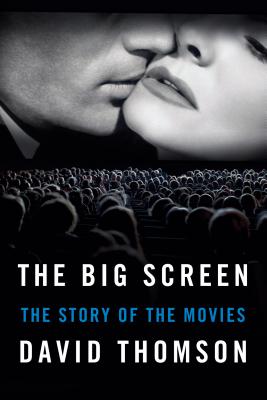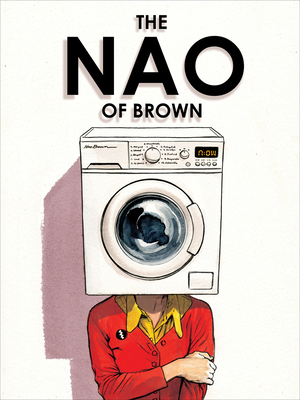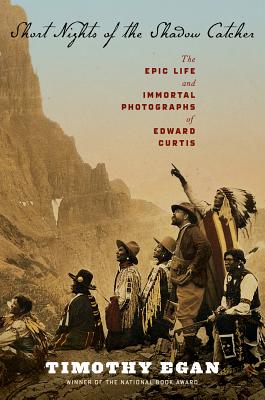Novelist Guy Ableman is in thrall to his vivacious wife Vanessa, a
strikingly beautiful red-head, contrary, highly strung and blazingly
angry. The trouble is, he is no less in thrall to her alluring mother,
Poppy. More like sisters than mother and daughter, they come as a pair, a
blistering presence that destroys Guy's peace of mind, suggesting the
wildest stories but making it impossible for him to concentrate long
enough to write any of them.
Not that anyone reads Guy anyway. Not that anyone is reading anything. Reading, Guy fears, is finished. His publisher, fearing the same, has committed suicide. His agent, like all agents, is in hiding. Vanessa, in the meantime, is writing a novel of her own. Guy doesn't expect her to finish it, or even start it, but he dreads the consequences if she does.
In flight from personal disappointment and universal despair, Guy wonders if it's time to take his love for Poppy to another level. Fiction might be dead, but desire isn't. And out of that desire he imagines squeezing one more great book. By turns angry, elegiac, and rude, Zoo Time is a novel about love: love of women, love of literature, love of laughter. It shows one of our funniest writers at his brilliant best.
The Big Screen tells the enthralling story of the movies: their rise and spread, their remarkable influence in the war years, and their long, slow decline to a form that is often richly entertaining but no longer lays claim to our lives the way it once did.
The Big Screen is not another history of the movies. Rather, it is a wide-ranging narrative about the movies and their signal role in modern life. At first, film was a waking dream, the gift of appearance delivered for a nickel to huddled masses sitting in the dark. But soon, and abruptly, movies began transforming our society and our perception of the world. David Thomson takes us around the globe, through time, and across many media—moving from Eadweard Muybridge to Steve Jobs, from Sunrise to I Love Lucy, from John Wayne to George Clooney, from television commercials to picture bytes on the Internet—to tell the complex, gripping, paradoxical story of the movies. He tracks the ways in which we were initially enchanted by this mesmerizing imitation of life and let movies—the stories, the stars, the look—show us how to live. But at the same time, movies, offering a seductive escape from everyday reality and its responsibilities, have made it possible for us to evade life altogether. The entranced audience has become a model for powerless and anxietyridden citizens trying to pursue happiness and dodge terror by sitting quietly in a dark room.Does the big screen take us out into the world, or merely mesmerize us? That is Thomson’s question in this grand adventure of a book. Books about the movies are often aimed at film buffs, but this passionate and provocative feat of storytelling is vital to anyone trying to make sense of the age of screens—the age that, more than ever, we are living in.
Twenty-eight-year-old Nao Brown, who’s hafu (half Japanese, half English), is not well. She’s suffering from obsessive-compulsive disorder (OCD) and fighting violent urges to harm other people. But that’s not who she really wants to be. Nao has dreams. She wants to quiet her unruly mind; she wants to get her design and illustration career off the ground; and she wants to find love, perfect love.
Nao’s life continues to seesaw. Her boyfriend dumps her; a toy deal falls through. But she also meets Gregory, an interesting washing-machine repairman, and Ray, an art teacher at the Buddhist Center. She begins to draw and meditate to ease her mind and open her heart—and in doing so comes to a big realization: Life isn’t black-and-white after all . . . it’s much more like brown.
How a lone man's epic obsession led to one of America's greatest cultural treasures: Prizewinning writer Timothy Egan tells the riveting, cinematic story behind the most famous photographs in Native American history -- and the driven, brilliant man who made them.
Edward Curtis was charismatic, handsome, a passionate mountaineer, and a famous photographer, the Annie Leibovitz of his time. He moved in rarefied circles, a friend to presidents, vaudeville stars, leading thinkers. And he was thirty-two years old in 1900 when he gave it all up to pursue his Great Idea: to capture on film the continent's original inhabitants before the old ways disappeared.
An Indiana Jones with a camera, Curtis spent the next three decades traveling from the Havasupai at the bottom of the Grand Canyon to the Acoma on a high mesa in New Mexico to the Salish in the rugged Northwest rain forest, documenting the stories and rituals of more than eighty tribes. It took tremendous perseverance -- ten years alone to persuade the Hopi to allow him into their Snake Dance ceremony. And the undertaking changed him profoundly, from detached observer to outraged advocate. Eventually Curtis took more than 40,000 photographs, preserved 10,000 audio recordings, and is credited with making the first narrative documentary film. In the process, the charming rogue with the grade school education created the most definitive archive of the American Indian.
His most powerful backer was Theodore Roosevelt, and his patron was J. P. Morgan. Despite the friends in high places, he was always broke and often disparaged as an upstart in pursuit of an impossible dream. He completed his masterwork in 1930, when he published the last of the twenty volumes. A nation in the grips of the Depression ignored it. But today rare Curtis photogravures bring high prices at auction, and he is hailed as a visionary. In the end he fulfilled his promise: He made the Indians live forever.
Not that anyone reads Guy anyway. Not that anyone is reading anything. Reading, Guy fears, is finished. His publisher, fearing the same, has committed suicide. His agent, like all agents, is in hiding. Vanessa, in the meantime, is writing a novel of her own. Guy doesn't expect her to finish it, or even start it, but he dreads the consequences if she does.
In flight from personal disappointment and universal despair, Guy wonders if it's time to take his love for Poppy to another level. Fiction might be dead, but desire isn't. And out of that desire he imagines squeezing one more great book. By turns angry, elegiac, and rude, Zoo Time is a novel about love: love of women, love of literature, love of laughter. It shows one of our funniest writers at his brilliant best.
The Big Screen tells the enthralling story of the movies: their rise and spread, their remarkable influence in the war years, and their long, slow decline to a form that is often richly entertaining but no longer lays claim to our lives the way it once did.
The Big Screen is not another history of the movies. Rather, it is a wide-ranging narrative about the movies and their signal role in modern life. At first, film was a waking dream, the gift of appearance delivered for a nickel to huddled masses sitting in the dark. But soon, and abruptly, movies began transforming our society and our perception of the world. David Thomson takes us around the globe, through time, and across many media—moving from Eadweard Muybridge to Steve Jobs, from Sunrise to I Love Lucy, from John Wayne to George Clooney, from television commercials to picture bytes on the Internet—to tell the complex, gripping, paradoxical story of the movies. He tracks the ways in which we were initially enchanted by this mesmerizing imitation of life and let movies—the stories, the stars, the look—show us how to live. But at the same time, movies, offering a seductive escape from everyday reality and its responsibilities, have made it possible for us to evade life altogether. The entranced audience has become a model for powerless and anxietyridden citizens trying to pursue happiness and dodge terror by sitting quietly in a dark room.Does the big screen take us out into the world, or merely mesmerize us? That is Thomson’s question in this grand adventure of a book. Books about the movies are often aimed at film buffs, but this passionate and provocative feat of storytelling is vital to anyone trying to make sense of the age of screens—the age that, more than ever, we are living in.
Twenty-eight-year-old Nao Brown, who’s hafu (half Japanese, half English), is not well. She’s suffering from obsessive-compulsive disorder (OCD) and fighting violent urges to harm other people. But that’s not who she really wants to be. Nao has dreams. She wants to quiet her unruly mind; she wants to get her design and illustration career off the ground; and she wants to find love, perfect love.
Nao’s life continues to seesaw. Her boyfriend dumps her; a toy deal falls through. But she also meets Gregory, an interesting washing-machine repairman, and Ray, an art teacher at the Buddhist Center. She begins to draw and meditate to ease her mind and open her heart—and in doing so comes to a big realization: Life isn’t black-and-white after all . . . it’s much more like brown.
How a lone man's epic obsession led to one of America's greatest cultural treasures: Prizewinning writer Timothy Egan tells the riveting, cinematic story behind the most famous photographs in Native American history -- and the driven, brilliant man who made them.
Edward Curtis was charismatic, handsome, a passionate mountaineer, and a famous photographer, the Annie Leibovitz of his time. He moved in rarefied circles, a friend to presidents, vaudeville stars, leading thinkers. And he was thirty-two years old in 1900 when he gave it all up to pursue his Great Idea: to capture on film the continent's original inhabitants before the old ways disappeared.
An Indiana Jones with a camera, Curtis spent the next three decades traveling from the Havasupai at the bottom of the Grand Canyon to the Acoma on a high mesa in New Mexico to the Salish in the rugged Northwest rain forest, documenting the stories and rituals of more than eighty tribes. It took tremendous perseverance -- ten years alone to persuade the Hopi to allow him into their Snake Dance ceremony. And the undertaking changed him profoundly, from detached observer to outraged advocate. Eventually Curtis took more than 40,000 photographs, preserved 10,000 audio recordings, and is credited with making the first narrative documentary film. In the process, the charming rogue with the grade school education created the most definitive archive of the American Indian.
His most powerful backer was Theodore Roosevelt, and his patron was J. P. Morgan. Despite the friends in high places, he was always broke and often disparaged as an upstart in pursuit of an impossible dream. He completed his masterwork in 1930, when he published the last of the twenty volumes. A nation in the grips of the Depression ignored it. But today rare Curtis photogravures bring high prices at auction, and he is hailed as a visionary. In the end he fulfilled his promise: He made the Indians live forever.




No comments:
Post a Comment